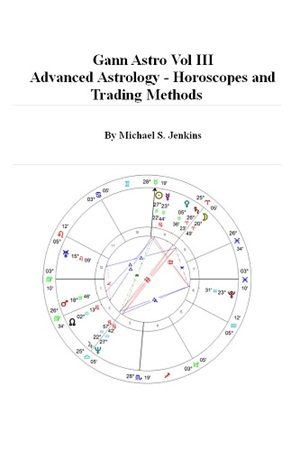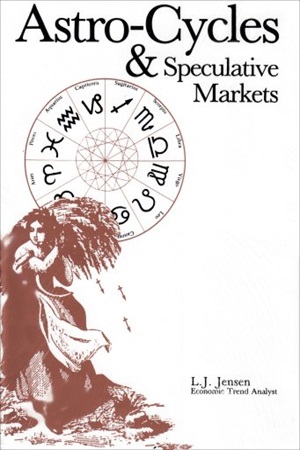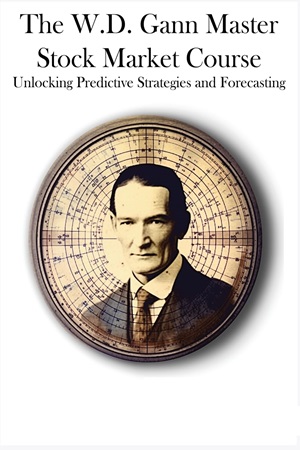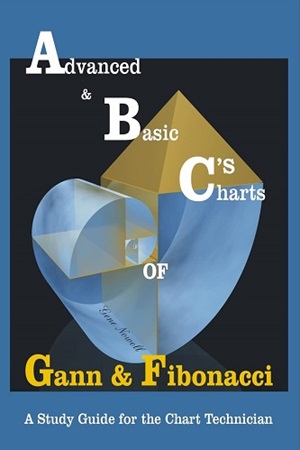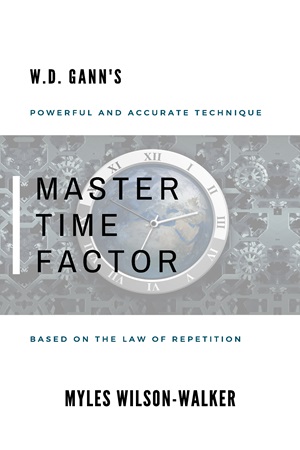Articles
W.D. Gann Mathematical Formula for Market Predictions
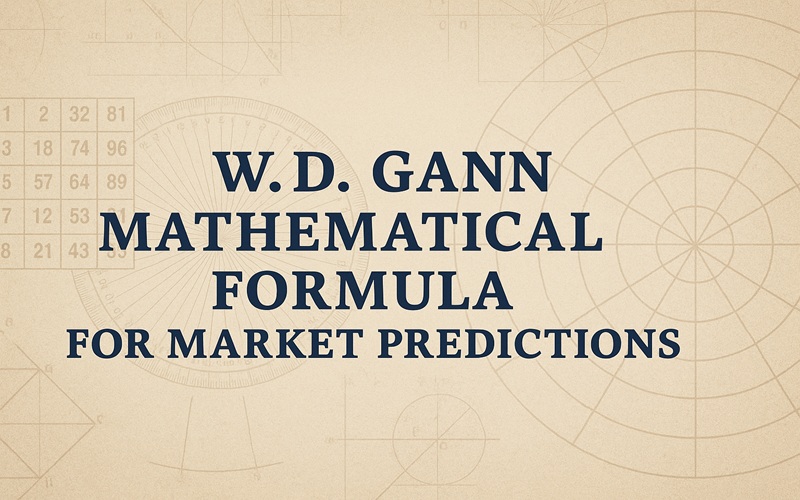
Unlock the sacred geometry of price and time with W.D. Gann’s Mathematical Formula for Market Predictions. This rare document offers a direct window into Gann’s most practical and powerful forecasting tools—particularly the Square of 144, also called the Great Cycle, and the Master Price, Time & Trend Calculator.
The article presents a comprehensive method for overlaying geometrical angles on daily, weekly, or monthly charts to predict turning points with mathematical precision. Gann outlines how to calculate price-time resistance using proportional cycles like 1/2, 1/4, 1/8, and more, emphasizing key vibration points such as 36, 72, 108, and 144.
It also highlights the mystical Master Numbers—3, 5, 7, 9, and 12—and shows how they link to the Bible, sacred time divisions, and recurring cycles in market behavior. Additionally, the document introduces the Square of Nine, a spiral-based chart used to determine market angles and resistance levels.
For Gann enthusiasts, esoteric analysts, or serious market timers, this article is a foundational piece that blends mathematics, vibration theory, and spiritual wisdom into a unified trading framework.
THE MASTER MATHEMATICAL PRICE, TIME AND TREND CACLULATOR
This chart is made on transparent plastic so that you can place it over a daily, weekly, or monthly high or low chart and see at a glance the position on the time and price based on the geometrical angles. It is designed to give QUICK ACCURATE EASY CALCULATIONS: SAVE TIME AND PREVENT ERRORS.
The square of 12 is always important in working out time periods because there are 12 months in a year. The square of 144 is the GREAT SQUARE and works better than any other square both for TIME AND PRICE because it contains all of the squares from 1 to 144. This chart is divided into sections of 9 both for time and price because 9 is the highest digit. Nine spaces on the daily chart equals 9 days, 9 weeks or 9 months in time periods and 9 equals 9¢ on grains, 9 points on stocks or 90 points on cotton on the daily high and low chart.
One column in the square of 144 contains 144. This would equal $144 on grain. 144 points on stocks or using a scale of 10 points to 1/8 inch it will equal 1440 points on cotton.
MASTER 144 SQUARE CONTAINS 324 square inches and each square inch contains 64 units which gives 20,736. This is 20,736 weeks or months and the proportionate parts of this are used for the measurement of time and price because this is the great cycle.
THE GREAT CYCLE OF THE SQUARE OF 144
The time period of this square is 20,736 days, weeks or months. One-half is 10,368 days. One-fourth is 5,184 days. One-eighth is 2,592 days. One-sixteenth is 1,296 days. One-thirty-second is 648 days and the one-sixty-fourth is 324 calendar or market days. 1/128 is 162 days and 1/256 is 81 days or the square of 9.
WEEKLY TIME PERIODS
THE GREAT CYCLE in weeks is 2962 and 2 days and 1/2 of this period is 1481 weeks and 1 day. One-fourth is 740 weeks. One-eighth is 370 weeks and 2 days. One-sixteenth is 185 weeks, 1 day. One-thirty-second is 92 weeks, 4 days and 1/64 is 41 weeks, 2 days.
MONTHLY TIME PERIODS
THE GREAT CYCLE in months is 681 months and 23 days. One-half of this 28 years, 9 months and 23 days. One-fourth is 14 years, 5 months and 8 days. One-eighth is 7 years, 2 1/2 months. One-sixteenth is 43 months and days. The weekly and monthly time periods from any major high and low can be checked to determine the future trend.
THE MASTER NUMBERS
The Master Numbers are 3,5,7,9, and 12. The No. 9 and is multiple is the most important because 9 digits added together equal 45. The next number of greatest importance is 7, the number mentioned more times in the Bible than any other number. There are 7 days in the week and 7 calendar days as well as 5 market days, and their multiples should be carried on your Daily, Weekly and Monthly Charts. The square of 7 is 49, which is a very important time period. The second square of 7 is 98 and the third square of 7 is 147 and the fourth square of 7 is 196 and 196 is also the square of 14. The next number in importance is No. 5 which is the balancing number between 1 and 9. The square of 5 is 25 and the second square of 5 is 50 which is just 1 over the square of 7 making 49 to 50 very important for a change in trend. Three squares of 5 is 75 and 5 squares of 5 is 100 and 100 is the square of 10, which is also important for changes.
The No. 3 is mentioned in the Bible next to the No. 7 and three is important because 3 x 3 equals 9, the square of 3, and it is the first old number that forms a square greater itself. Three must be used in every way possible, 3 x 7 equals 21, 3 x 5 equals 15, 3 x 9 equals 27 and 3 x 12 equals 36, very important because it is the square of 6. The No. 12 is also spoken of in the Bible many time and is of great importance. Jesus selected 12 deciples. There are 12 months in a year, and 12 signs of the Zodiac. The important 12’s in the square of 144 are 12, 24, 36, 48, 60, 72, 84, 96,108, 120,132 and 144. These are all important for both time and price in days, is weeks and months.
Referring to the No. 9, 7 x 9 is 63 and is a great importance because the square of 8 his 64, therefore, around 63 to 64 is very important to watch the change in trend. 7 x 12 is 84 and this is of very great importance and the No. next to this is 90, which is 10 x 9 and 90 is one-quarter of the circle, which is very important for time and price changes. Next in importance is 9 x 12 which is 108 or three-quarters of 144.
The importance of the circle of 360 deg. must not be overlooked in connection with the square of 144 because the proportionate parts of the circle agree with the parts of 144. 2 1/2 times 144 equals 360 1 1/4 times 144 equals 180, 1/2 of the circle, and 90 is 5/8 of 144. 9 is 1/16 of 144, 18 his 1/8, 27 is 3/8, 36 is 1/4, 45 is 5/16 and always very important for time and price changes and for resistance levels. 48 is 1/3 of 144 and 54 is 3/8 and 63 to 7/16, 72 is one-half of 144, 81 the square of 9, is 9/16 of 144 and 90 is 5/8, 99 is 11/16, 108 is 3/4, 117 his 13/16, and 126 is 7/8 and 135 is 15/16 of 144. These are the most important in the square of 12 and should be watched closely when time periods in days, weeks or months reach these points on the Master Calculator. Remember that you should always watch the Daily Chart for the first indication of the change in trend and at the same time look at the position on the Weekly Chart or seven day time periods which is next in importance. The Monthly Chart is of the greatest importance for changes in the main trend.
THE IMPORTANCE OF 3 AND 5
The movement in PRICE and TIME whether on a Daily, Weekly or Monthly chart has three important points, the PRICE, the TIME AND VOLUME of sales, the PITCH OR TREND which is the geometrical angle which shows whether time is influencing and driving prices up or down on a slow angle or an acute fast moving angle. To there are also for other factors that influence prices, PRICE, TIME AND VOLUME AND VELOCITY. Time is the most important factor because when time is up volume increases and the velocity or speed of the market increases and the PITCH or TREND on the angles moves up faster or down faster
There are three other important points to consider on a Daily, Weekly or Monthly High and Low chart. These are the LOW PRICE, the HIGHEST PRICE and the RANGE her for a or 1/2 between the high and the low.
FIVE FACTORS FOR TIME AND PRICE
These are high, low, halfway point, opening and closing prices. The trend is indicated by the closing price, especially when the market is very active. If the price closes above the halfway point or near the high, the trend is up. If it closes below the halfway point or near the low, the selling is greater than the buying and the trend is down, at least temporarily. In connection with the Master Time and Trend Calculator apply all of the rules with the Master Time Factor and geometric angles.
STRONGEST POINTS FOR TIME AND PRICE RESISTANCE
In using the Master Square of 144, the strongest points are 1/4, 1/3, 2/3, 3/8, 1/2, 5/8, 3/4, 7/8 and the complete square of 144. The points were the most angles cross are the strongest for resistance and PRICE and TIME.
TRIANGLE POINTS
The triangle points or way of the green angles cross are the most important. These are 72, 144, 36, 48, 96, 108 and of course, 72, and at the end of the square of 144 at the top and the bottom.
SQUARES IN THE SQUARE OF 144
These squares were the angles cross are of great importance for time and price resistance. These are 36, 45, 54, 63, 72, 90, 108, and at the top of the square of 144 at the top and the bottom. When the price is at point equal to 36 and the time periods in days, weeks or months is at 36, TIME and PRICE is SQUARE and it is important to watch for change in trend. With the square of 144 you can get any square from 1 to 144. Suppose you want to get the square of 72; you move across to 72 for time and if the prices is at 72 moving up on the chart, PRICE and TIME have balanced, or squared out, and are at the 45 degree angle and at the halfway point on the Master Price, Time and Trend Calculator.
WHERE TO WATCH FOR CHANGES IN TREND
Most changes in trend occur when the TIME PERIODS are at one-half of the square of 144 and happy and of a square or at the 1/3, 2/3,1/4, and 3/4 points in the square of 144; you must always watch the square and time of the HIGHEST PRICE and the MINOR HIGHS and LOWS, also the square in TIME of the LOWEST PRICE and the SECOND or THIRD higher bottom, and also the time required to square the Range and where this square works out in the Master Square of 144.
📘 Ebooks on Gann’s Methods & Techniques
EXAMPLE: the lowest price that wheat ever sold was 28¢ per bushel, In March, 1852, therefore, every 28 months would square the lowest price. The highest price that wheat ever sold for was in May 11, 1917 when the May option sold at 325, therefore, it would require 325 months to square the highest price. The lowest price that the May option ever sold was 44¢, therefore, it would require 44 months in time to square the low price. The range between 44 and 325 is 281¢ which would require 281 months, 281 weeks or 281 days to square the Range. You would look on the Master Chart and see that 2 squares of 144 equal 288, therefore, you would watch for a change in trend between 281 and 288 or near the end of the second square of 144. 7 x 44, the extreme low, equals 308, therefore 6 1/2 times 44 would equal 286, which is within two points of the end of the square of 144 or the end of the second square making 286 and important time period to watch for a change in trend. In squaring the range of 325, the highest price for May wheat with the 2 squares of 144 and 17 over, therefore, when the time reached 36 days, weeks or months in the Master Square of 144 you can see that resistance would be met because moving up the time period of 136 you see that the 45 deg. angle moving down from 72, which is the INNER SQUARE and the line drawn across from 36 on the price scale crosses at 36. In this way you can see that the Master Chart would indicate a resistance in time and price corresponding with the square of the highest price, the lowest price, and the Range. All other time periods from a high price, low price, of the range of any commodity or of the stock averages or individual stocks should be worked out in this same way.
You will succeed in using the Master Mathematical Price, Time and Trend Calculator by going over the charts and laying the calculator over them and working out past history. In this way you will learn just how it works and prove to yourself the great value of the Master Calculator.
HOURLY TIME PERIODS
When markets are very active and making a wider range in price, it is important to keep an Hourly High and Low Chart, just the same as you keep the Daily High and Low Chart and the Hourly Chart will give the first change in trend. There are 24 hours in the day, therefore, 6 days are required to pass through 144 and a total of 864 days to pass through the square of 144.
At the present time, all exchanges are open 5 days a week with the exception of holidays and most of them are open 5 hours each day, therefore, it will require 28 days and 4 hours to pass through 144 at the rate of 5 hours per day and 5 days per week.
GREAT YEARLY TIME CYCLE
To pass through the square of 144, which equals 20,736, it requires 56 years, 9 months and 23 days, which is very important time cycle. Next is importance is 1/2 of this time period which is 28 years, 5 months and 8 days and 1/4 which is 14 years, 2 months and 19 days. The 14 years cycle is always very important because it is 2 seven year periods. 14 years equals 168 months and 169 months is the square of 13 making it very important for a change in trend and this is also an important time resistance point.
1/8 of the Great Cycle if 7 years, 1 month and 10 days and is quite important. 1/16 is 42 months and 20 days, 1/32 is 21 months and 10 days. This is an important time period because it is close to 22 1/2 months which 1/16 of the circle of 360 degrees.
NINE SPACES AND NINE TIME PERIODS
The chart being divided up into 9 sections gives all the squares of 9 for price resistance and time resistance which, as referred to above is 9¢ on the Daily Chart for grains and the same for Weekly and Monthly Charts; that is, 1¢ to each 1/8 inch. For different commodities, different scales are used.
The Chart being divided up into 9 sections gives a 16 the squares of 9 for price resistance or time resistance which, as referred to above, is 90 points on the Daily Chart, 135 on the Weekly Chart, and 270 on the Monthly and 2880 on the 20 point scale and 9 spaces equal 180 points.
The angles in red are all drawn on the squares of 9. The Inner Square of 450 is drawn from 72 because 72 is 1/2 of 144. These angles come out at 72, 144 and 72. The straight lines are in green and are 1/3 of the square of 144 in price or time.
GREEN ANGLES
The green angles are the angles of 2 x 1 which are up two spaces or 2 points in one period of time. The other angle below the 450 angle is the angle of 1 x 2 which requires 2 time periods to move up 1 space or 1 cent per bushel on grains for each time period of 1 day, week or 1 month. These angles move down from the top at the rate of 2 points or 2 spaces per time period or at the rate of 1/2 space, 1/2 point or 1/2 cents per time period. The distance that the green angles and the red angles are apart determines how far prices can advance or decline.
When the market enters the INNER SQUARE it is important for a change in trend and time angles and Position in the square tell at the time it entered whether the price is going up or down. Also when price breaks below the 45 deg. on the INNER SQUARE it shows weakness in proportion to the time from high or low price.
WHEN TO START A NEW SQUARE
When the time period of the Daily, Weekly or Monthly Charts has moved 144 you began a new square. But to get the position you simply move the Master Square over to 144 and place it over the chart to get the position in the next square.
STRONGEST AND WEAKEST POINTS
Where the greatest number of angles cross or bisect each other in the square of 144 are the points of greatest resistance, such as where the 25 and 2 x 1 angles cross each other. Study and practice on past action of the market and you will soon learn how to determine the trend very quickly by using the Master Chart.
HOW TO USE THE MASTER SQUARE OF 144
Follow all rules on angles as given in the Master Forecasting course. Place this chart at the bottom or 0 on the daily, weekly or monthly chart or place the bottom of the chart on the low price or square of the high price, the low price, and the square of the range in show where time and price balances.
When you figure the halfway point of the extreme high or the halfway point of the range, place either the top of the bottom of the chart on the halfway point and it will give the correct POSITION and TREND. However, if you will place the CENTER, or 72, on the halfway point in PRICE you will then get the correct position in time and can see how the price is working out with time and the MASTER SQUARE of 144 and the INNER SQUARE which starts from 72, the gravity center or 1/2 point of the square.
CALENDAR DAYS AND MARKET DAYS
For any kind of chart, we move over one space for each unit of time. Therefore, it would require 144 market days or 144 calendar days to complete the square of 144. When prices pass out of one square into another, a change in trend usually takes place and the periods and geometrical angles on this Master Chart will tell you which way the trend is going to change.
LEAP YEARS
In calculating time periods to get the exact number of days and weeks the LEAP YEAR must be figured and one extra day added. From 1864 the Leap Years were as follows: 1868; 1872; 1876; 1880; 1884; 1888; 1892; 1896; 1904; 1908; 1912; 1916; 1920; 1924; 1928; 1932; 1936; 1940; 1944; 1948 and 1952.
POSITION WITH MASTER SQUARE
To get the position with the MASTER SQUARE of 144 lay it over the Daily, Weekly or Monthly and start from the extreme low, extreme high, 0 or 1/2 point of the range or 1/2 of the high selling price. You can also place the top of the chart at the high selling price. In this way you can get the correct time and position or angles at a glance.
Place MASTER CALCULATOR on January to twelve year periods, each month same way. You should have all time periods from important highs and lows calculated in days, weeks and months in order that you can look them up quickly on the MASTER CHART.
With all time periods brought up to date in this way, you can get the position on the MASTER CHART and the indicated trend without looking at a daily, weekly or months chart. You should have the time periods and months from every important top and bottom.
With the MASTER SQUARE of 144, your work will be cut down but you must learn to practice and bring up all time periods and study the MASTER SQUARE and learn how to use it to get tops and bottoms accurately. Work and practice will bring PRECISION and PROFITS. I have done my part. It is now up to you to work hard and if you do, your success is assured.
🎓 Courses on Gann’s Methods & Strategies
SQUARE OF NINE
You have already had the MASTER SQUARE OF TWELVE explained, which represents days, weeks, months and years, and the measurements of TIME in the Square of Twelve or the Square of the Circle.
The SQUARE OF NINE is very important because nine digits are used in the measuring everything, and we cannot go beyond 9 without starting to repeat and using the 0. If we divide 360° by 9, we get 40, which measures 40°, 40 months, 40 days, or 40 weeks, and shows why bottoms and tops often come out on these angles measured by one-ninth of the total circle.
If we divide our 20 year period, or 240 months, by 9, we get 26-2/3 months, making important angle of 26-2/3°, months, days or weeks. Nine times nine equals 81, which completes the First Square of Nine. Note the angles and how they run from the main center. The Second Square of Nine is completed at 162. Note how this is an opposition to the main center. The Third Square of Nine is completed at 243, which would equal 243 months or three months over our 20 year period and accounts for the time which often elapses before the change in the Cycle, sometimes running over three months or more. The Fourth Square of Nine ends at 324. Note the angles of 45° cross 325, indicating a change in cycles here. To complete the 360° requires Four Squares of Nine and 36 over. Note that 361 equals a square of 19 times 19, thus proving the great value of the Square of Nine and working out the important angles and proving out discrepancies.
Beginning with “1” at the center, note how 7, 21, 43, 75,111, 157, 211, 273 and 343 all fall on a 45° angle. Going the other way, note that 3, 13, 31, 57, 91, 133, 183, 241 and 307 fall on an angle of 45°. Remember there are always four ways you can travel from the center following an angle of 45°, or an angle of 180° or an angle of 90°, which all equal about the same when measured on a flat surface. Note that 8, 23, 46, 77, 116, 163, 218, 281 and 353 are all on an angle from the main center also note that four, 15, 36, 61, 96,130,190, 249 and 316 are on an angle from the main center, also note that four, 15, 34, 61, 96, 130, 190, 249 and 316 are on an angle from the main center, all of these being great resistance points and measuring out important time factors and angles.
Study the SQUARE OF NINE very carefully in connection with the MASTER TWELVE and 360° CIRCLE CHART.
SIX SQUARES OF NINE
We are sending you six permanent Charts, each containing 81 numbers. The first Square of Nine runs from 1 to 81. Everything must have a bottom, top, and four sides to be a square or cube. The First Square running up to 81 is the bottom, base, floor or beginning point. Squares #2, 3, 4 and 5 are the four sides, which are equal and contain 81 numbers. The Sixth Square of Nine is the top and means that it is times times as referred to in the Bible, or a thing reproducing itself by being multiplied by itself. Nine times nine equals 81 and six time 81 equals 486. You can also use 9 time 81, which would equal 729.
The No. 5 is the most important number of the digits because it is the balance or main center. There are four numbers on each side of it. Note how it is shown as the balancing or center number in the Square of Nine.
We square of the Circle by beginning at 1 in the center and going around until we reach 360. Note that the Square of Nine comes out at 361. The reason for this is it is 19 times, and the 1 to begin with and one over 360 represent the beginning and ending points, 361 is a transition point and begins at the next circle. Should we leave the first space blank and make it “0” than we would come out at 360. Everything in mathematics must prove. You can begin at the center and work out, or began at the outer rim and work in to the center. Begin at the left and work right to the center or to the outer rim or square.
Note the Square of Nine or the Square of the Circle where we begin with 1 and rune up the side of the column to 19, then continue to go across until we have made 19 columns, again the square of 19 by 19. Note how this proves up the circle. One-half of the circle is 180°. Note that in the grand-center, where all angles from the four corners and from the East, West, North and South reach gravity center, number 191 appears, showing that this point we are crossing the Equator or Gravity center and are starting on the other half of the circle.
We have astronomical and astrological proof of the whys and wherefores and the cause of the workings of geometrical angles. When you have made progress, proved yourself worthy, I will give you the Master Number and also the Master Work.
Study the human body in every way and you will find that it is the work of a Master Mind, and when once you know yourself and know your body, you will know the Law and will understand all there is to know. Remember there is a source of all supply and that you have within you the power to know all there is to know, but you must work hard, seek and you shall find.
Mathematical Formula for Market Predictions By W.D. Gann

